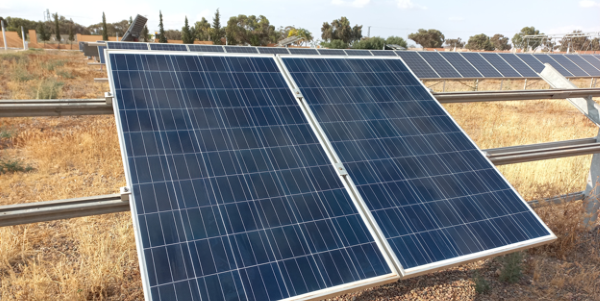Researchers in Morocco investigated the effects of an anti-reflective coating on solar panel performance under desert conditions and found that both annual performance ratio and energy yield improved by 2% and 5.5% respectively. They have also found that it is durable and can withstand dry cleaning methods under accelerated testing.
Researchers led by scientists from Mohammed First University in Morocco investigated the use of solar panels equipped with an anti-reflective coating at Green Energy Park, a Benguerir-based testing facility in a location with favorable solar radiation of 2,239 kWh/m2/year but a harsh climate , with high temperatures, little precipitation and high aerosol levels.
The experiment involved setting up two commercial modules side by side, one with an anti-reflective coating (AR) and the other without.
“It is the first study to comprehensively assess the electrical, optical, durability and economic aspects of AR coatings simultaneously and under real, harsh outdoor conditions,” said Ahmed Alami Merrouni, corresponding author of the study. pv magazineadding that the “unexpected yet significant result” was the “significant reduction” of 2.7% in levelized energy costs (LCOE).
The scientists assessed the electrical performance of the AR-coated PV modules over a 10-month period, during which they performed regular cleaning and weekly transmission measurements. Using the results of the field study, the team calculated the effect that AR-coated modules would have on the financial performance of a large-scale PV installation, using a 40 MW PV power plant as a case study.
“The simulation results show that a 40 MW power plant with standard PV panels produces an annual electricity production of 69 GWh. In contrast, an analogue power plant with ARC-coated panels achieves an increased electricity generation of 72 GWh, which represents a remarkable 5.5% improvement compared to conventional panels,” the researchers said.
“From an economic point of view, the simulation results reveal an LCOE of €0.037/kWh for the 40 MWe power plant using uncoated PV modules. Conversely, the LCOE for the same power plant using ARC modules is €0.0368/kWh, showing a 2.7% reduction in electricity production costs,” she added.
Laboratory wear tests on AR-coated glass samples were also conducted to determine the impact on optical performance and coating durability.
“Our research showed that after 1,500 sanding cycles, simulating 29 years of weekly cleaning, the optical properties only decreased by 2.6%. This impressive durability opens the possibility of using dry cleaning methods for PV power plants with this coating, significantly reducing cleaning costs and saving water,” says Alami Merrouni.
The AR-coated glass samples also showed “good anti-fouling optical performance,” with fouling losses 3.7% lower compared to uncoated samples for the same exposure period, according to the scientists.
Since the study was conducted, feedback from other solar energy researchers and Moroccan government organizations has been positive, Alami Merrouni said. “The most striking and significant result that draws attention is the durability of the AR coatings under linear abrasion testing,” he said.
“This feedback underlines the practical benefits and potential for the widespread adoption of AR coating solutions, especially in regions such as Morocco, where the AR coating, in addition to its high performance, can open the possibility of using chemical cleaning methods, which significantly reduce of costs possible. cleaning costs and water conservation, which is crucial for desert locations,” he concluded.
The research is described in detail in the article “Experimental Analysis of the Performance of Anti-Reflective Coatings in Desert Climate: Yield Analysis, Pollution Impact, and Cleaning Durability Evaluation”, published in sustainable energy technologies and assessments.
This content is copyrighted and may not be reused. If you would like to collaborate with us and reuse some of our content, please contact: editors@pv-magazine.com.

